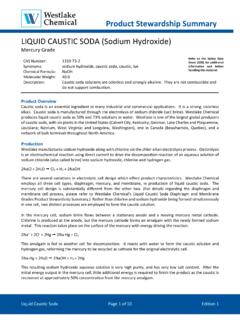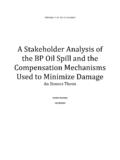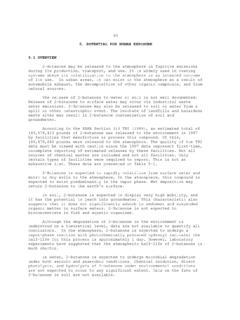Transcription of LIQUID CAUSTIC SODA (Sodium Hydroxide) - westlake.com
1 Product Stewardship Summary LIQUID CAUSTIC SODA (Sodium Hydroxide). Diaphragm and Membrane Grades Refer to the Safety Data CAS Number: 1310-73-2 Sheet (SDS) for additional Synonyms: sodium hydroxide, CAUSTIC soda, CAUSTIC , lye information and before handling this material. Chemical Formula: NaOH. Molecular Weight: Description: CAUSTIC soda solutions are colorless and strongly alkaline. They are not combustible and do not support combustion. Product Overview CAUSTIC soda is an essential ingredient in many industrial and commercial applications. It is a strong, colorless alkali.
2 CAUSTIC soda is manufactured through the electrolysis of sodium chloride (salt brine). Westlake Chemical produces LIQUID CAUSTIC soda as 50% and 73% solutions in water. Westlake is one of the largest global producers of CAUSTIC soda, with six plants in the United States (Calvert City, Kentucky; Geismar, Lake Charles and Plaquemine, Louisiana; Natrium, West Virginia; and Longview, Washington), one in Canada (Beauharnois, Quebec), and a network of bulk terminals throughout North America. Production Westlake manufactures sodium hydroxide along with chlorine via the chlor-alkali electrolysis process.
3 Electrolysis is an electrochemical reaction using direct current to drive the decomposition reaction of an aqueous solution of sodium chloride (also called brine) into sodium hydroxide, chlorine and hydrogen gas. 2 NaCl + 2H2O Cl2 + H2 + 2 NaOH. Electrolytic cell technology and design affect the sodium hydroxide product characteristics. In a diaphragm cell, a permeable diaphragm provides a separation between the anode side of the cell where chlorine is produced and the cathode side of the cell where sodium hydroxide and hydrogen are produced. Although there is flow through the diaphragm, the diaphragm separates the chlorine containing anolyte solution and the sodium hydroxide containing catholyte solution, preventing mixing and reaction of the product components.
4 The resulting sodium hydroxide solution from the cell is 10-12% and contains sodium chloride, or salt, which has been transported through the diaphragm. This solution is then concentrated by evaporation to final product strength of 50% sodium hydroxide and about 2% sodium chloride. The membrane cell differs from the diaphragm cell in that the solutions surrounding each electrode are separated by a semi-permeable membrane that selectively allows only the migration of sodium ions from the anode to the cathode chamber. Membrane cells produce 32% sodium hydroxide. Since the chloride ion generally stays in the anode compartment of the cell, the resulting sodium hydroxide product has substantially less sodium chloride in the product solution than that produced in diaphragm cells.
5 The 32% sodium hydroxide produced from the cells is then concentrated to 50% through evaporation. Uses CAUSTIC soda has a wide variety of applications based primarily on its ability as a strong alkali to react with many substances. It is a stronger base and faster reactant than other alkalis. It is much more stable in water and can be economically stored and transported in LIQUID form. It also does not form undesirable by-products such as carbon dioxide or other insoluble carbonates. The largest uses for CAUSTIC soda are pulp and paper manufacturing, LIQUID CAUSTIC Soda Page 1 of 10 Edition 1.
6 Product Stewardship Summary alumina production, de-inking of waste paper, water treatment, and general chemistry. CAUSTIC soda is a basic feedstock in the manufacture of a wide range of chemicals. It is used as an intermediate and a reactant in processes that produce solvents, plastics, synthetic fibers, bleach, adhesives, coatings, herbicides, dyes, inks, and pharmaceuticals such as aspirin. It is also used in soap and detergent, oil and gas, and textile industries as well as to neutralize acidic waste streams and the scrubbing of acidic components from off-gases. With all downstream applications, appropriate registrations and/or approvals may be required.
7 Possible uses are described below: Chemical Production - The chemical industry consumes nearly 40% of the CAUSTIC soda produced as a basic reagent for a multitude of general industrial applications. Pulp and Paper - Both sulfate and sulfite pulps are purified by removing lignin compounds in the CAUSTIC extraction stages of multistage bleach plants. In some kraft mills, CAUSTIC soda is used as a makeup chemical. It is also used as the initial treatment in de-inking secondary fibers. Rayon and Cellophane - Fiber production by the viscose process requires CAUSTIC soda at two main stages.
8 Cellulose is treated with CAUSTIC soda solution to mercerize it and form alkali cellulose, which is then dissolved in dilute CAUSTIC soda solution to form viscose prior to extruding rayon fibers and cellophane films. Alumina Extraction - CAUSTIC soda is used to digest bauxite ore, precipitating alumina (aluminum oxide). It is also used as an etchant in the finishing and chemical milling of aluminum products. Soapmaking - CAUSTIC soda saponifies fats into water soluble sodium soaps. Textiles - Used in scouring, bleaching, desizing, lustering and mercerizing. Petroleum Production and Refining - CAUSTIC soda is used as an absorbent for carbon dioxide in light petroleum fractions; as an absorbent for sulfides in the purification of various fractions; and with chlorine for hypochlorite sweetening, a treatment step in the removal of various sulfur compounds.
9 Soda Ash Replacement - CAUSTIC soda can be used interchangeably for many applications in glass, paper, pulp, phosphates and silicates industries. Renewable Fuels - CAUSTIC soda is used for pH adjustment and formation of in situ sodium methylate in bioethanol and biodiesel processing. Health Effects Read and follow all instructions on the product label and review the Safety Data Sheet (SDS) to understand and avoid the hazards associated with CAUSTIC soda. Wear appropriate personal protective equipment and avoid direct contact. Eye contact with CAUSTIC soda causes serious eye damage including irreversible damage and blindness.
10 Skin contact causes severe burns. Ingestion of CAUSTIC soda may cause irreversible damage to gastrointestinal mucous membranes, upper airway edema and is often life threatening. Inhalation of CAUSTIC soda may cause cough and bronchospasm. Inhalation of high concentrations may cause irreversible damage, including upper airway edema and corrosive burns. The United States Occupational Safety and Health Administration (OSHA) and the American Conference of Governmental Industrial Hygienists (ACGIH) have established or recommended occupational airborne exposure limits for CAUSTIC soda.










